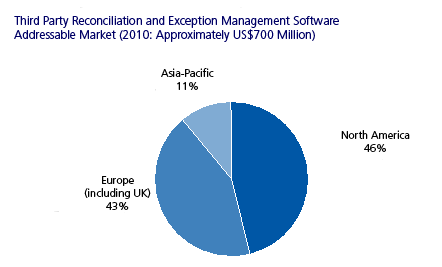Reconciliation and Exception Management
Abstract
IT spending on reconciliation exception management solutions is expected to reach US$700 million in 2010, of which US$360 million will go to third party software vendors, US$90 million will be spent on specialized providers, between US$200 and $250 million will be captured by external resources, and around US$150 million will be allocated to maintenance and upgrade of existing solutions.
In this report, Reconciliation and Exception Management, Celent examines the growth and evolution of reconciliation and exception management solutions in recent years. The report considers the various issues and challenges that have emerged and the implications for the industry.
Looking at the spending by region and segment, North America and Europe and Tier I and II banks and asset managers dominate spending. Diversified banks in Europe and North America, many forged by mergers, have a higher propensity to seek outside solutions, while Asian banks prefer homegrown systems. North America comprises the largest portion at 46%, while Europe comprises 43% and APAC is 11%. Corresponding 2010 spending levels are estimated to be US$325 million for North America, $300 million for Europe, and $75 million for Asia-Pacific.

“Reconciliation engines are increasingly becoming more capable of handling new types of OTC derivatives, and are reaching out to become workflow management solutions through incremental upgrades to their exception management tools,” says Anshuman Jaswal, Celent Senior Analyst and coauthor of the report.
“Vendor functionality is fairly undifferentiated, but customer preferences are for smart, rule-driven reconciliation engines with a high degree of flexibility and the ability to customize,” says Axel Pierron, Celent Senior Vice President and coauthor of the report. “Exception management is viewed as a core part of any solution.”
Growth in collateralized OTC derivatives transactions has meant that reconciliations have to evolve accordingly, and this report discusses the drivers of and challenges of this development. It also looks at the possible benefits of three-way reconciliations and shared reconciliation services.

